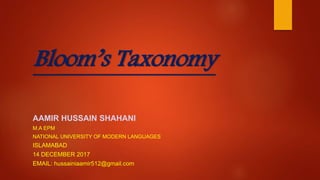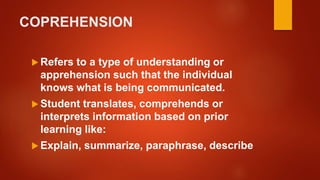Benjamin Bloom created a taxonomy of educational objectives known as Bloom's Taxonomy. It classified educational goals according to levels of complexity and specificity of outcome. The original taxonomy had three domains: cognitive, affective, and psychomotor. The cognitive domain involved knowledge and intellectual skills and included remembering, understanding, applying, analyzing, evaluating, and creating. Bloom's taxonomy was later revised by Lorin Anderson to change the names of the categories from nouns to verbs. Bloom's taxonomy is used widely by educators to inform curriculum development, instructional methods, and assessment of student learning.


























